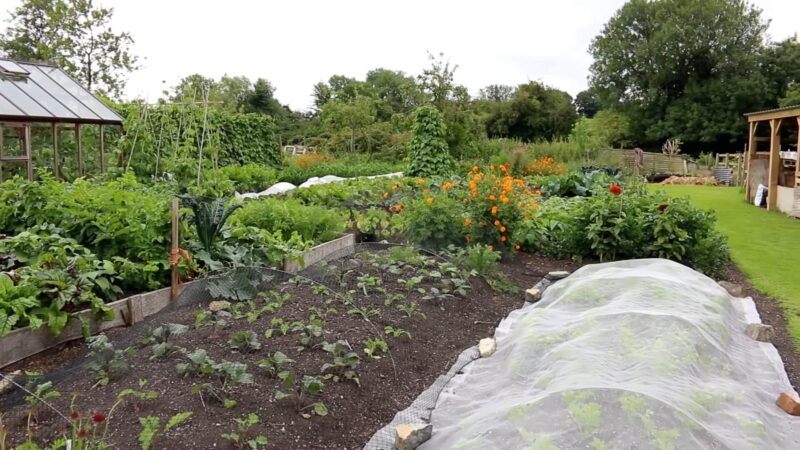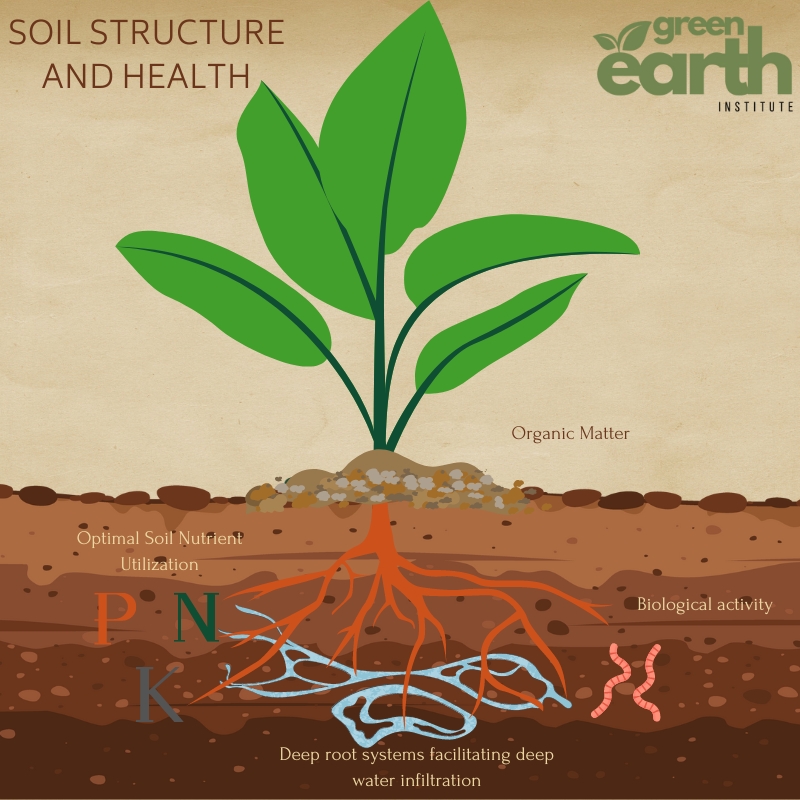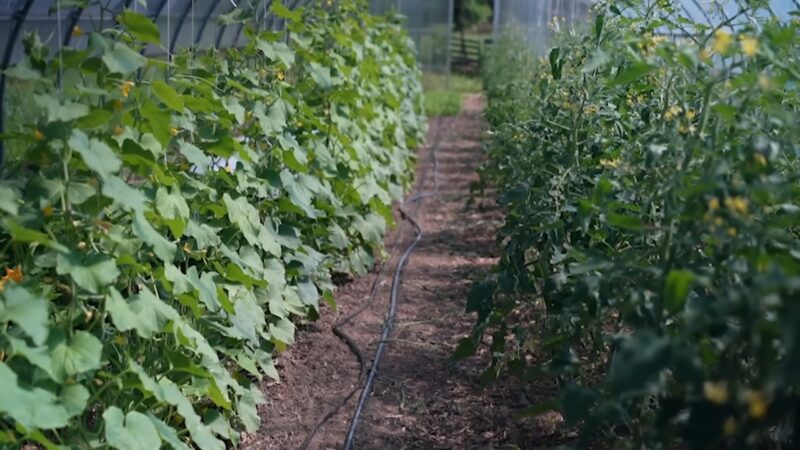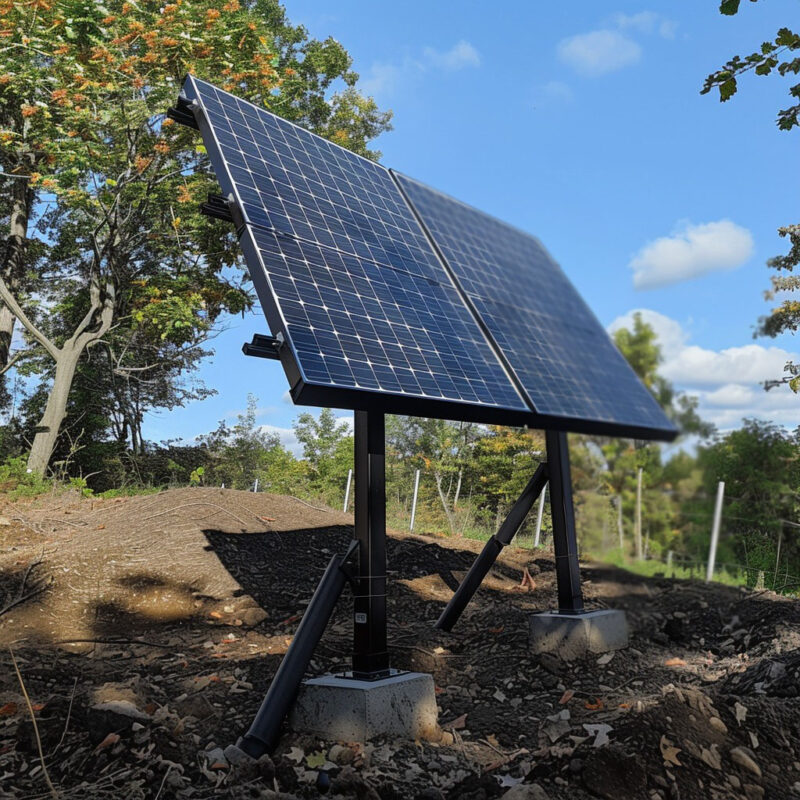Are you ready to make push for a more eco-friendly environment, and try to be an example to others? Having an eco-friendly farm can be just the thing you are looking for.
While doing something like this is not easy, it is certainly not impossible.
Hard work and enough time will do just the thing, trust me.
I want to help; therefore, I will provide some of the factors that can play a massive role in implementing as much of eco-friendly methods in your farm, from the start.
Initial Planning and Assessment
Starting an eco farm requires comprehensive planning and detailed assessment to ensure the sustainability and viability of agricultural practices.
The preparation is an irreplaceable factor for creating a farming environment that respects and enhances the natural ecosystems.
Land Assessment

The initial step in planning an eco farm is to conduct a thorough assessment of the land. Here are the processes you need to go through to make a proper land assessment:
| Aspect | Description |
|---|---|
| Evaluating Soil Type | Soil types vary significantly, from sandy soils that drain quickly to clay-rich soils that retain moisture. |
| Analyzing Topography | Topography affects water management and erosion risks; slopes can cause runoff, while flat areas may have water pooling issues. |
| Assessing Existing Ecosystems | Eco farms should harmonize with existing ecosystems, considering the interactions of native flora and fauna. |
| Considering Biodiversity | Biodiversity involves the variety and ecological roles of organisms, crucial for ecosystem resilience and productivity. |
Soil and Land Management
Soil health is a cornerstone of eco-farming, essential for the long-term sustainability and productivity of the land. Implementing effective soil and land management practices can significantly improve the soil’s ability to support healthy crop growth while minimizing environmental impact.
Soil Structure and Health

Reduced tillage is a key practice in eco-farming that helps to maintain soil structure and reduce erosion. Traditional tilling methods can disrupt soil microbiota and lead to compaction and erosion; in contrast, reduced tillage or no-till practices limit soil disturbance, preserving soil organic matter and enhancing the habitat for soil organisms.
This in turn improves soil structure, which is crucial for water infiltration and root development.
Adding organic matter to the soil, such as compost or well-aged manure, is another fundamental practice. This not only boosts soil fertility by adding essential nutrients but also enhances microbial activity, crucial for nutrient cycling and soil health.
Organic amendments improve the soil’s water retention capacity, reducing the need for frequent irrigation and helping plants withstand periods of drought.
Crop Rotation and Cover Crops

Crop rotation is another vital strategy in sustainable agriculture. By growing different types of crops in sequential seasons or years, farmers can break cycles of pests and diseases naturally, reducing the need for chemical interventions.
Different crops extract and replenish nutrients at varying rates and depths in the soil, which helps to maintain soil fertility and prevent nutrient depletion. Cover crops play a critical role in managing soil health during the off-season.
Plants such as legumes, grasses, and other green manures are grown not primarily for harvest but to cover the soil. These crops improve soil health by fixing nitrogen from the air into the soil, enhancing soil nitrogen content naturally.
They also help in suppressing weed growth by providing a physical barrier and through natural allelopathic effects (where plants release chemicals that inhibit the growth of nearby weed species). The root systems of cover crops stabilize the soil, preventing erosion and improving soil structure.
Water Management
Efficient water management is essential in eco-farming, focusing on the sustainable use of water resources and minimizing the environmental impact of agricultural activities.
Drip Irrigation Systems

Drip irrigation is a highly efficient method of watering crops. It involves the placement of tubes or pipes with small holes or emitters along the rows of crops. These emitters slowly release water directly to the plant roots, minimizing evaporation and runoff, and ensuring that water is used optimally without wastage.
The precise delivery system is particularly advantageous in regions prone to drought or where water resources are scarce. It not only conserves water but also ensures that plants receive the right amount of moisture needed for growth, reducing the stress on local water bodies and groundwater reserves.
Rainwater Harvesting
Rainwater harvesting is another pivotal strategy in water management for eco-farming. This practice involves collecting rainwater from rooftops, greenhouses, or farm structures and storing it in tanks or reservoirs for later use.
Techniques such as constructing swales—shallow channels with gently sloping sides—and rain barrels can be used to effectively capture and store rainwater.
Swales help direct water flow across the landscape, increasing water infiltration and reducing soil erosion, while rain barrels provide a simple storage solution that can be used to irrigate crops during dry periods.
Energy Management
Effective energy management is a key component of eco-farming, aiming to reduce carbon footprints and increase energy self-sufficiency through the integration of renewable energy sources.
These sources not only minimize reliance on fossil fuels but also support sustainable agricultural practices.
While they are still rare, they have a massive potential for the future.
| Type of Energy | Description |
|---|---|
| Solar Energy | Converts sunlight to electricity; integrates with agriculture to optimize crop growth. |
| Wind Energy | Generates power from wind for farm operations; suitable for windy areas. |
| Biogas Production | Turns organic waste into methane for energy and natural fertilizer, enhancing soil health. |
| Geothermal Energy | Regulates greenhouse temperatures using underground heat, enabling year-round production. |
| Hydro and Tidal Power | Utilizes water flow and ocean tides to produce electricity, ideal for farms near water bodies. |
I own two solar panels, which is not nearly enough, but they show a promising potential.

Waste Management
Effective waste management is crucial for eco farms, focusing on reducing waste generation and maximizing the reuse and recycling of materials.
Minimizing Plastic Waste
Plastic waste is prevalent in many farming operations, used extensively in mulching and greenhouse covers.
Plastic can cause significant environmental harm if not managed properly due to its non-biodegradable nature. Implementing proper recycling systems is essential.
This involves collecting used plastic materials and ensuring they are processed at recycling facilities.
Some eco farms opt for biodegradable alternatives to traditional plastics, such as plant-based mulch films, which decompose naturally and reduce long-term waste.
Organic Waste Management

Organic waste such as crop residues, livestock manure, and food scraps is a valuable resource on an eco farm.
Through composting, this organic matter is transformed into rich soil amendments. Composting involves controlled aerobic decomposition, which stabilizes the organic material, reducing pathogens and weed seeds, and turning it into nutrient-rich compost. The compost not only improves soil structure and fertility but also helps retain moisture in the soil, reducing the need for water and synthetic fertilizers.
Reducing Greenhouse Gas Emissions
Composting plays a significant role in mitigating climate change. By composting organic waste, eco farms prevent the release of methane that would occur if these materials were left to decompose anaerobically in landfills.
Composting organic materials instead of burning them not only avoids the emission of greenhouse gases but also prevents air pollution associated with the burning of biomass.
Monitoring and Adapting
In eco-farming, monitoring and adapting are crucial processes that leverage advanced technologies to improve farm management and response to environmental changes.
Implementing Advanced Technologies
The integration of advanced technologies such as sensors, the Internet of Things (IoT), and data analytics into eco-farming operations enables precise and continuous monitoring of various farm conditions.
Sensors placed in the soil can provide real-time data on moisture levels, nutrient content, and pH values.
IoT devices can collect and transmit data from various parts of the farm, allowing for centralized monitoring of conditions such as temperature, humidity, and crop health.
Utilizing Data-Driven Insights
The data collected through these technological tools is invaluable for making informed decisions. Analyzing trends and patterns in soil conditions, crop growth, and climate variables, farmers can predict potential issues before they become severe, such as detecting early signs of drought stress or pest infestations.
Adaptive Management Strategies
Adaptive management is a systematic process for continually improving management policies and practices by learning from the outcomes of operational programs. In the context of eco-farming, this involves adjusting farming practices based on real-time environmental and operational feedback.
For instance:
If data shows a sudden change in weather patterns, such as an unexpected frost, farmers can quickly react by deploying frost protection measures or altering planting schedules.
Summary
Naturally, the best time for implementing eco-friendly practices is from the start. Adjusting things when they are already on the way can take a lot of time.
Nobody likes time-wasting, right?
I am certain this insight will help you in your future strivings to have an eco-friendly farm.
I’m Cameron Lowery, an agriculturist based in the beautiful state of Vermont. Through my writing, I’ll guide you on how to maintain your gardens effectively while embracing sustainable practices.

